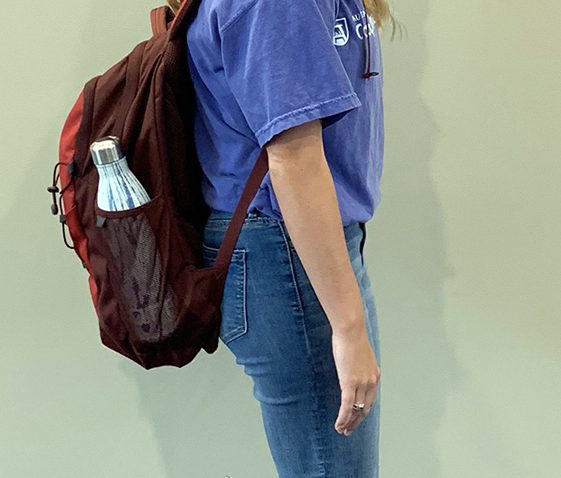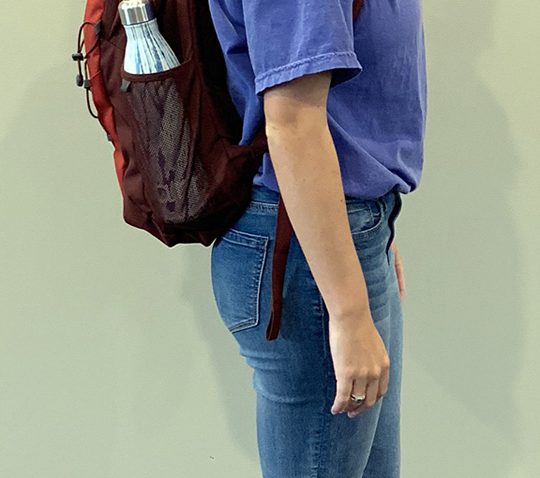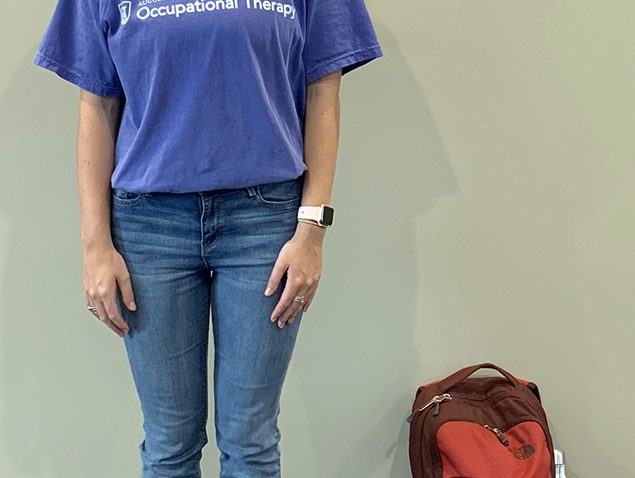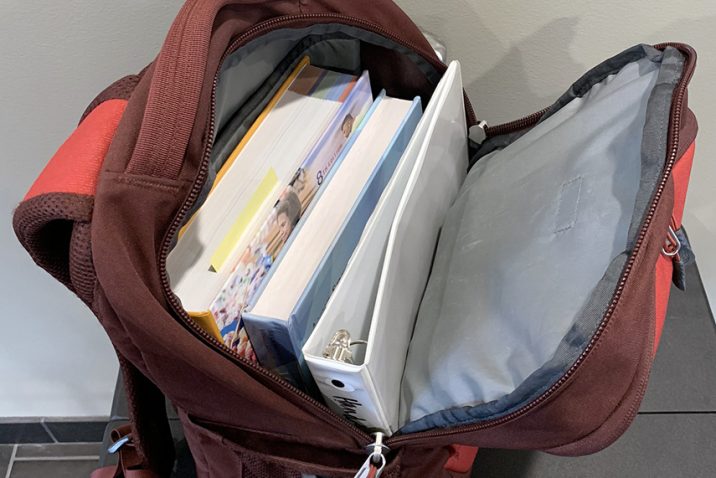The school year is in full swing and backpacks are starting to get heavy. Augusta University’s Occupational Therapy program is working to spread the message, “Pack it light, wear it right” for National Backpack Awareness Day on Wednesday, Sept. 18.
“Research shows backpacks that are worn incorrectly, or are too heavy, are a contributing risk factor for musculoskeletal pain and fatigue,” says Meghan Hall, assistant professor of occupational therapy. “This can be especially problematic for school-age children and young adults, whose postural habits are still developing.
“Small changes can make a big difference: consider carrying only what you need, filling your water bottle after arriving at school, or leaving items in a secure location at school overnight.”
The American Occupational Therapy Association has developed a list of tips for safely packing and wearing a backpack and AU Occupational Therapy students have demonstrated appropriate use so you can avoid pain and strain this school year.
Wearing a backpack
- Distribute weight evenly by using both straps. Wearing a pack slung over one shoulder can cause the wearer to lean to one side, curving the spine and causing pain or discomfort.
- Select a backpack with well-padded shoulder straps. The space on the shoulders where the straps cross has many blood vessels and nerves that can cause pain and tingling in the neck, arms, and hands when too much pressure is applied.
- Adjust the shoulder straps so the pack fits snugly on the back. A pack that hangs loosely can pull the wearer backward and strain muscles.
- Wear the waist belt if the backpack has one, which helps distribute the weight more evenly.
- The bottom of the pack should rest in the curve of the lower back. It should never rest more than four inches below the waistline.
- Backpacks come in different sizes for different ages. Choose the right size pack for the wearer as well as one with enough room for necessary school items.
Backpack weight
- A backpack should weigh 5-10% of the wearer’s body weight. For example, a student weighing 70 pounds should have a backpack that weighs close to 5 pounds. Graduate students should keep in mind that many laptops weigh 5 pounds and most textbooks weigh between 3-5 pounds.
Loading a backpack
- Load heaviest items closest to the wearer’s back.
- Arrange books and materials so they will not shift
- Be sure only the items necessary for the day’s activities are being carried
- If the backpack is too heavy or tightly packed, hand-carry a book or other item.
- If the backpack is too heavy on a regular basis, consider using a bookbag on wheels if your school allows it.
For more information about Backpack Awareness Week, visit the American Occupational Therapy Association resource page.
 Augusta University
Augusta University







